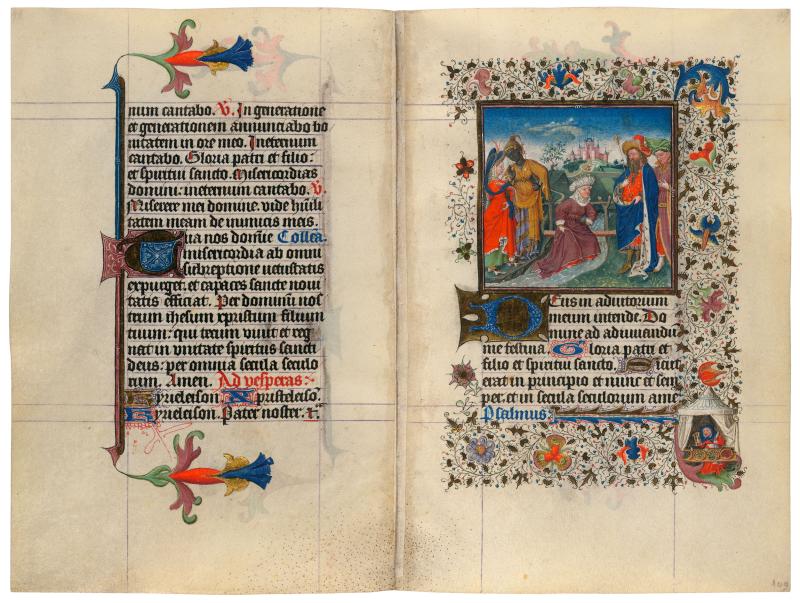
The Queen of Sheba Fording the Stream of Cedron
ca. 1440
The Netherlands, Utrecht
MS M.917/945, pp. 108–109
Purchased on the Belle da Costa Greene Fund with the assistance of the Fellows, 1963
Catalog link
Unsuitable for constructing the temple, the timber is employed as a lowly footbridge over the stream of Cedron. It is this footbridge that the Queen of Sheba must cross in order to pay a visit to Solomon. The queen, however, had a prophetic vision that the bridge would furnish the wood upon which Christ would be crucified. She therefore refuses to tread on the bridge and instead wades, as we see here, across the Cedron to reach the waiting king.
